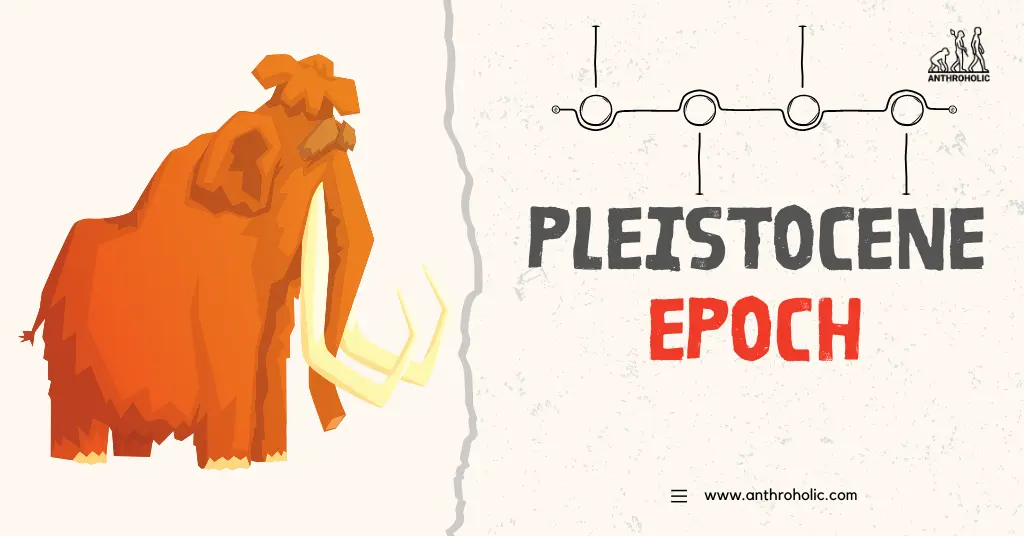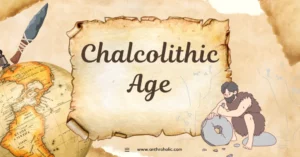AI Answer Evaluation Platform Live Now. Try Free Answer Evaluation Now
Pleistocene Epoch
The Pleistocene Epoch, often referred to as the Ice Age, is a significant period in Earth’s history. Spanning from 2.6 million to 11,700 years ago, it was characterized by repeated glaciations, the evolution of modern humans, and the extinction of large mammals [1].

Overview of the Pleistocene Epoch
The Pleistocene is the first epoch of the Quaternary period in the geologic time scale. It follows the Pliocene Epoch and precedes the current epoch, the Holocene. The Pleistocene is notable for its drastic climate changes, which included numerous glaciations, also known as “ice ages” [2].
Duration and Division
The Pleistocene lasted from about 2.6 million to 11,700 years ago. It is divided into four stages based on the marine oxygen isotope record: the Gelasian, Calabrian, Ionian, and Tarantian.
| Stage | Duration |
|---|---|
| Gelasian | 2.58 to 1.80 million years ago |
| Calabrian | 1.80 to 0.78 million years ago |
| Ionian | 0.78 to 0.13 million years ago |
| Tarantian | 0.13 million years ago to the end of Pleistocene |
Climate and Environment
The Pleistocene is most known for its ice ages. During these periods, large ice sheets covered vast parts of North America, Europe, and Asia. These glaciations were interspersed with warmer interglacial periods when the ice retreated.
Life During the Pleistocene
The Pleistocene was a time of significant evolutionary changes, with the emergence of many species that we recognize today.
- Flora: During glaciations, the flora was similar to the tundra ecosystem, with grasses, herbs, and shrubs dominating. In contrast, interglacial periods saw the return of forests and a more diverse plant life.
- Fauna: The Pleistocene is famous for its megafauna, large animals that roamed the Earth. These included mammoths, saber-toothed cats, giant ground sloths, and dire wolves. Many of these species became extinct by the end of the Pleistocene, in an event known as the Quaternary extinction.
- Homo Sapiens: The Pleistocene also saw the evolution of Homo sapiens, or modern humans, around 300,000 years ago. Humans began to develop tools, art, and culture, marking the beginning of recorded history.
The End of the Pleistocene
The Pleistocene ended with the retreat of the last major ice sheets about 11,700 years ago, marking the start of the Holocene Epoch and the current interglacial period. This transition is associated with a global warming trend that continues to this day.
Significance of the Pleistocene Epoch
The Pleistocene is a critical period for understanding Earth’s climate history and the evolution of modern ecosystems. The changes that occurred during this time have shaped the world as we know it today.
- Climate Understanding: The Pleistocene provides valuable data for studying climate change. By analyzing ice cores from this period, scientists can gain insights into past atmospheric conditions and predict future climate trends.
- Evolutionary Insights: The Pleistocene was a time of rapid evolution and extinction, providing a wealth of information about natural selection and adaptation. The emergence of modern humans during this period also offers insights into our own evolutionary history.
Pleistocene Glaciations: The Ice Ages
The Pleistocene Epoch is often synonymous with the term “Ice Age” due to the extensive glaciations that occurred during this period. These glaciations were not constant but occurred in cycles, with periods of extensive ice coverage known as “glacial periods” and warmer periods with less ice coverage known as “interglacial periods”.
- Glacial Periods: During glacial periods, large ice sheets, up to 3 kilometers thick, covered much of North America, Northern Europe, and Asia. These ice sheets dramatically altered the landscape, carving out valleys and fjords, and creating many of the Great Lakes in North America.
- Interglacial Periods: Interglacial periods were times of warmer climate when the ice sheets retreated. These periods were characterized by a more diverse flora and fauna, with forests returning to areas previously covered by ice. The current epoch, the Holocene, is an interglacial period.
The Quaternary Extinction Event
The end of the Pleistocene Epoch was marked by a significant extinction event, known as the Quaternary extinction. This event saw the disappearance of many large mammals, or megafauna, including mammoths, mastodons, saber-toothed cats, and giant ground sloths.
- Causes of the Extinction: The causes of the Quaternary extinction are still debated among scientists. Some propose that the rapid climate changes at the end of the Pleistocene were responsible, while others suggest that overhunting by humans played a significant role. It’s likely that a combination of these factors contributed to the extinction.
The Pleistocene and Human Evolution
The Pleistocene Epoch was a crucial period for human evolution. The genus Homo, which includes modern humans, evolved during the early Pleistocene, with Homo sapiens appearing around 300,000 years ago.
- Development of Culture and Technology: The Pleistocene saw significant advancements in human culture and technology. Early humans developed stone tools, learned to control fire, and began to create art. These developments laid the foundation for human civilization.
- Migration of Humans: The Pleistocene also saw the first migrations of humans out of Africa and into other parts of the world. By the end of the Pleistocene, humans had spread to every continent except Antarctica.
Conclusion
The Pleistocene Epoch was a time of dramatic climate changes and significant evolutionary developments. Its study provides crucial insights into our planet’s history, the evolution of life, and the challenges we face in the future.
References
- “Pleistocene Epoch”, Encyclopaedia Britannica, https://www.britannica.com/science/Pleistocene-Epoch
- “The Pleistocene Epoch”, University of California Museum of Paleontology, https://ucmp.berkeley.edu/quaternary/pleistocene.php




